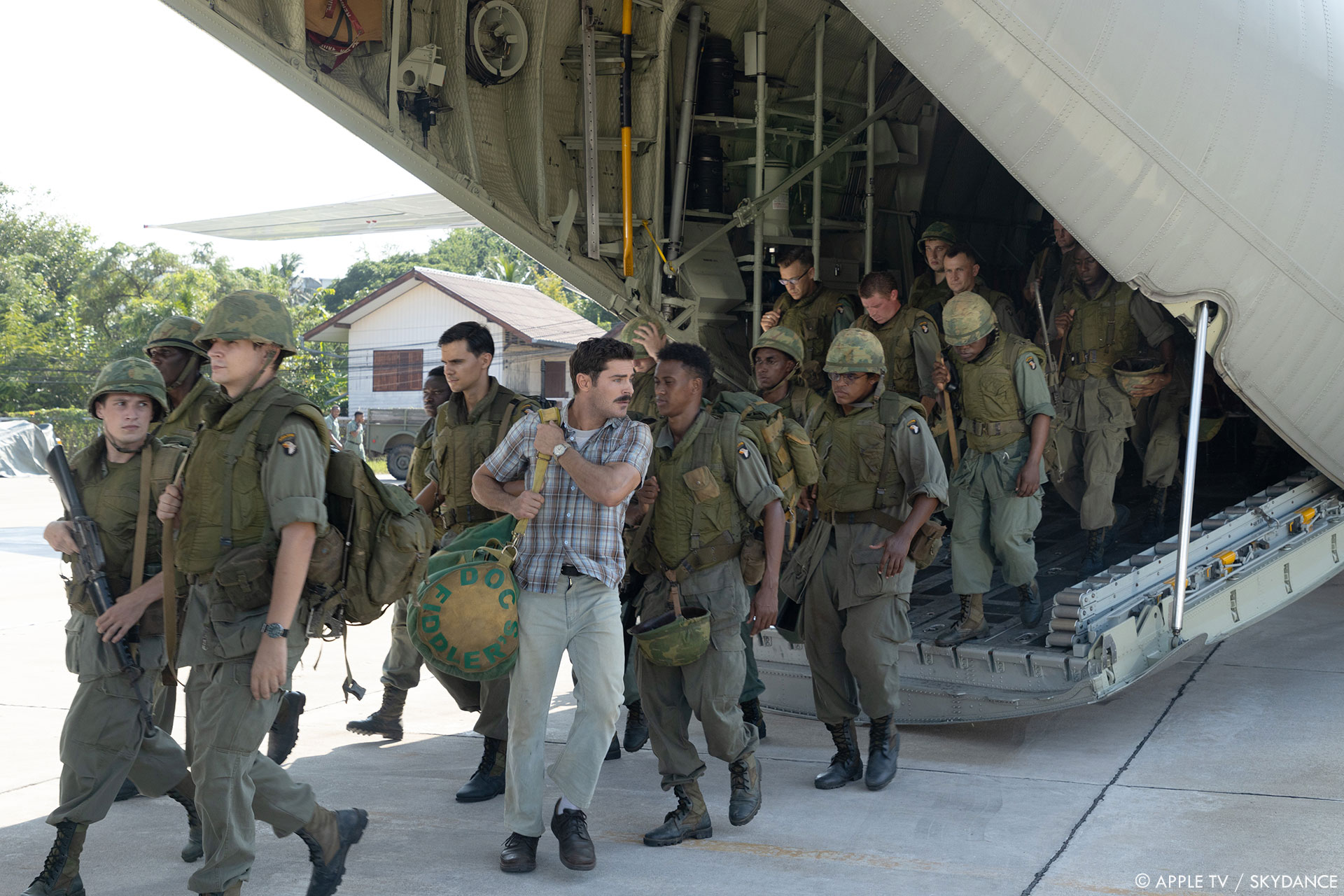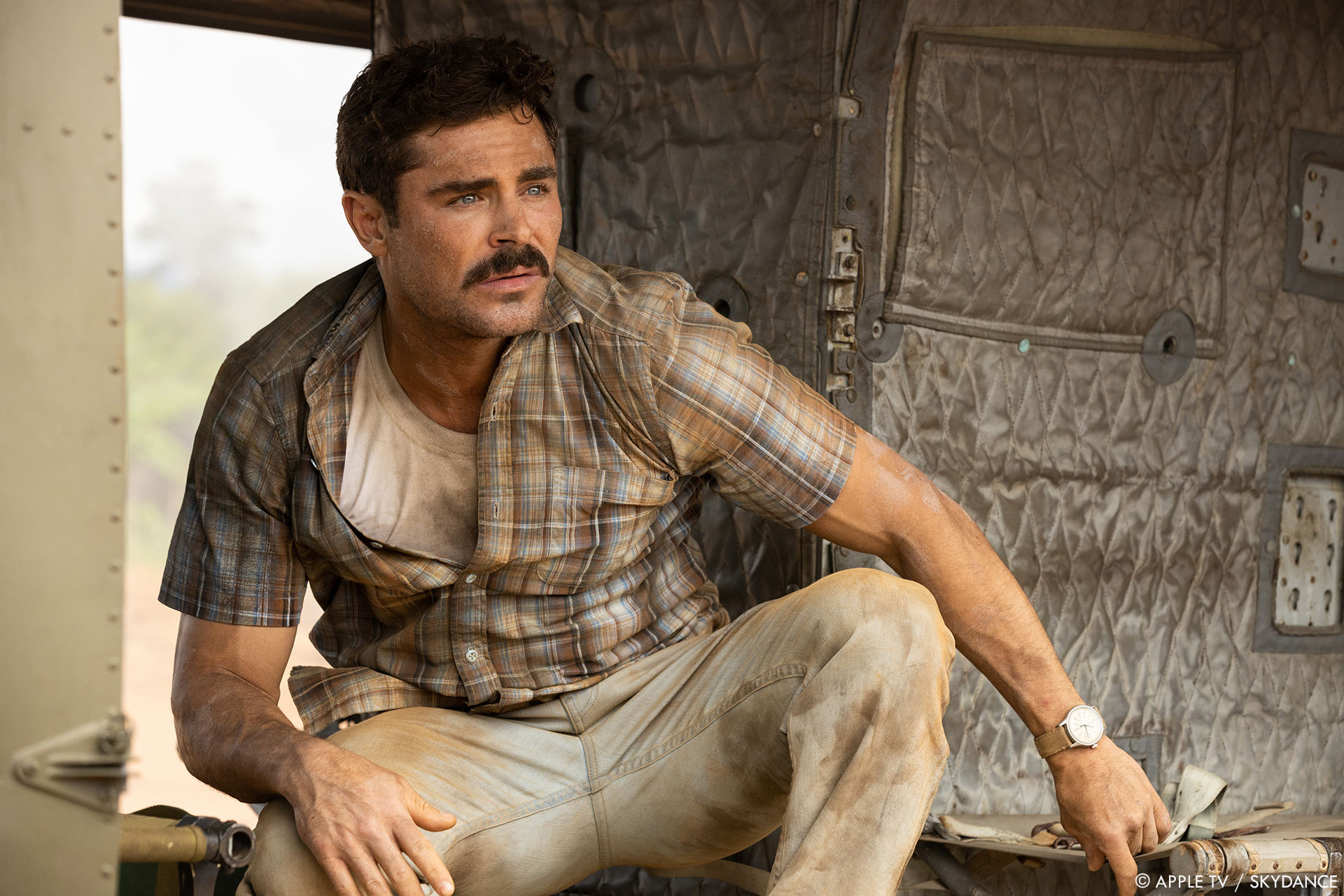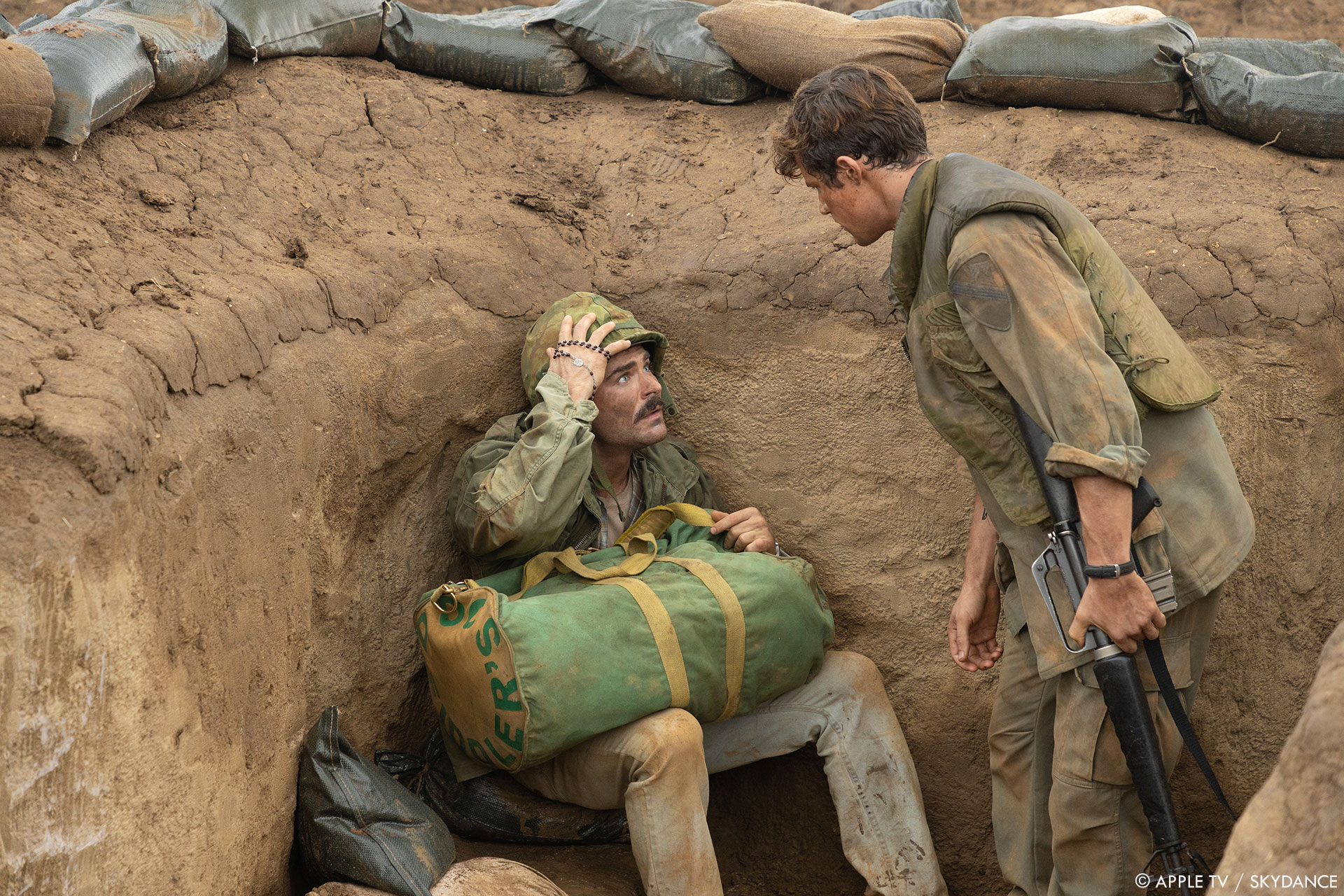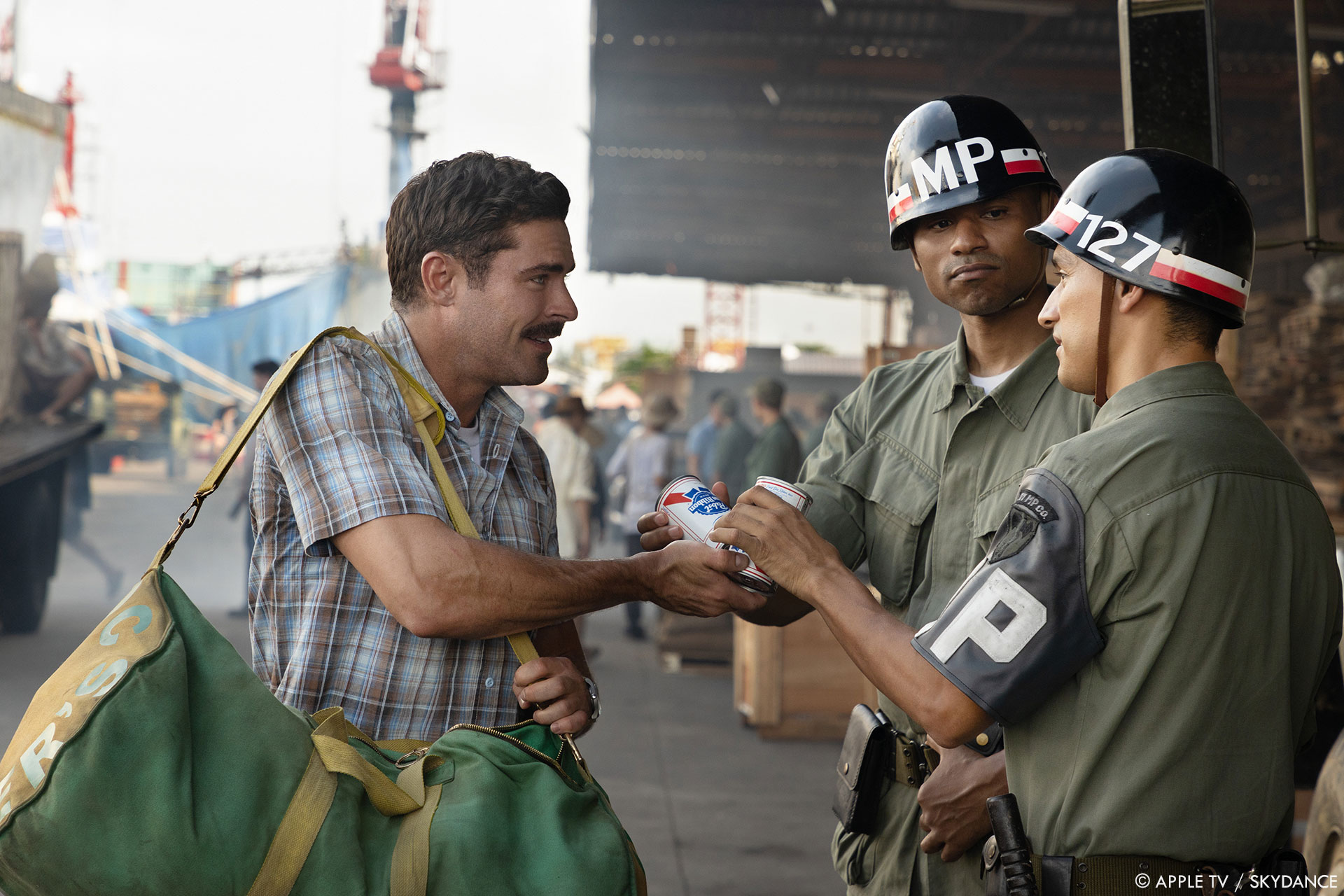Ashley Bettini began her career in visual effects at ILM in 2009. She has worked on many films such as Iron Man 2, The Last Witch Hunter, Deadpool 2 and Jungle Cruise.
What is your background?
In all honesty, I completely fell into Visual Effects. I was hired on a short-term contract to be an administrative assistant at ILM in 2009 and whenever I had downtime, I would go from production office to production office offering to help with anything I could in order to learn about VFX Production as fast as possible. After a few months I was moved over to be a VFX PA full-time on Cowboys and Aliens and that’s when the real education started. I had a great experience working at ILM with some incredibly brilliant and talented people but realized my passion was to be on the freelance side of the industry. I wanted to be a part of the filmmaking process from Prep through Post, be on set, and work much more closely with directors and editors. I returned to Los Angeles in 2011 and steadily climbed the ladder from there.
How was your collaboration with Director Peter Farrelly?
Absolutely fantastic. On top of being one of the loveliest and most hilarious people I have ever had the honor to work with, Pete is an extremely hardworking and collaborative director. He leans on his HODs and trusts their input without any ego getting in the way. He’s thoughtful and direct about what he wants but is understanding and will help problem-solve when limitations arise. I would consider myself extremely fortunate to get to work with him again in the future.
What was his approach and expectations about the visual effects?
Pete, Sean Porter (DP), and I were all in agreement from the get-go to try and capture as much in-camera as possible, and with the incredible hard work from Tim Galvin (Production Designer) and JB Rogers (AD and Co-Producer), we were able to do a lot practically and then augment with VFX where needed. Pete was also up-front from the beginning that he had a limited experience with VFX, and while Beer Run isn’t a particularly VFX-heavy movie, it’s the most VFX Pete has used compared to his previous films. Things like CG explosions, elephants, digidoubles, helicopters and airplanes were all new to Pete and it was a blast to make those come to life with him.
How did you choose the vendors and split the work amongst them?
It made the most sense to divide the work into 3 award packages: 1.) all the period-accuracy clean-up and other 2D comp work to an In House team; 2.) all the CG hard surface and FX work to another; and 3.) the elephants would be the sole focus of a final vendor. Rebels was my incredible In House team lead by Matthew Mullarkey – they ended up having the largest shot count on the show as there was a lot of clean-up work needed to make it look like it was 1967. Spin VFX up in Toronto handled our explosions, Hueys, Jets and Cargo planes, Embassy Extensions, Caravelle Hotel exteriors, 1967 NY Skyline, gore, and digidouble work. And Method Melbourne (now Framestore Melbourne) brought our beautiful elephants to life.
How was the collaboration with VFX Supervisors?
I was very fortunate to have a wonderful relationship with my vendor Supervisors. This project was my first time VFX Supervising, and I was transparent from the beginning that I would be leaning on Kirk Brillon (Spin), Joshua Simmonds (Method), and Matthew Mullarkey (Rebels) to get shots to where they needed to be, and they were great partners in that process.
What was your approach about the environments work?
Seeing as our main CG location builds were based off real places, it was pretty straightforward to get them right. Tim Galvin and his team did an incredible job building and dressing as much as they could and VFX took it over from there. For example, Art Dept actually built the courtyard and first 2 stories of the US Embassy in a soccer field in Thailand and the top 4 floors were CG. The set build was gorgeous and Spin did a great job making the extension look absolutely seamless. We had the same approach for the Caravelle Hotel – the first floor was constructed and dressed on top of a real building in Bangkok so the actors had something to walk in front of and interact with, and VFX took over the extension beyond that.

Where was filmed the various exterior sequences and especially in Saigon?
Everything for Vietnam was filmed in Thailand. We never shot a single day on a backlot and we only spent 2 days of the whole shoot on a soundstage (strictly for the LED helicopter work). Other than that, it was all location-based and the Locations team did a wonderful job finding streets or buildings that were very similar to 1960s Saigon. Obviously modern technology (satellite dishes, air conditioning units, CCTVs, etc.) was not a thing in 1960s Vietnam, so we scrubbed that stuff out of any shots where those items were visible. Also, the Thai language is very distinct looking, so we had to paint out or replace any signage in the practical locations.
Which location was the most complicate to enhance?
Probably the NYC Skyline. While it’s only one shot in the movie, there was SO much to change to make it look like 1960s NY – not just removing and replacing buildings, but the waterfront and boats as well. I think it’s one of those shots that isn’t “noticeable” to an audience which means it’s successful because it should be seamless and shouldn’t stand out, and I think we achieved that. But the before and after of those plates is wild!
Did you used Virtual Production or LED techniques?
We used LEDs panels for a couple scenes inside the helicopter – the main one being the scene when a Vietnamese Prisoner is interrogated for information by a CIA agent while Chickie watches in horror. Because we had dialogue and stunts taking place in that scene, it made the most sense to shoot it in a controlled environment. Sean Porter was passionate about shooting on LEDs instead of bluescreen in order to capture the interactive lighting in camera, so Production shot aerial drone plates early on in the schedule and worked with Supreme Studios in Thailand to make it come together.

The movie is full of explosions. Can you tell us more about their creation and especially the big one on the base?
My personal favorite explosions are the drive-bys by our fighter jets, but the explosion at Long Binh Ammo Dump was interesting to do because we didn’t want to go the route of making an over the top, unrealistic explosion. Due to the distance away from the Embassy, we wanted to keep it about the top half of the explosion where we only see the mushroom cloud of smoke. One of the war correspondents in the scene makes a comment about hoping the US didn’t just drop an atomic bomb and that’s based on real-life reactions from the time – the explosion at the ammo dump was so big, people thought it was an atomic bomb!
Can you tell us more about the elephants creation and animation?
From the beginning, the elephants were VERY important to Pete, Brian Currie, and Pete Jones (the writers) as they represent how no one/nothing was safe from the effects of this war. There were brief, early discussions about trying to shoot with real elephants (since we were filming in Thailand where there are quite a few sanctuaries for Asian Elephants), but the ethical and practical issues that came along with that option quickly made it a non-starter. Therefore CG was the only way forward and I knew they had to look perfect or they would take viewers out of the movie. Luckily Method Melbourne (now Framestore) was up to the challenge and they were such a joy to work with that, even though this sequence was the one I was originally the most stressed out about, they completely alleviated any of my fears. There are so many little nuanced pieces of secondary animation that you will probably only catch if you watch the shots over and over again, but these touches make them so much more real. This level of detail from the Method team for their 8 shots really shines through. Honestly, the most painful part of creating the elephants was I had severe food poisoning the night we shot the scene!
How did you enhanced the gore aspect?
For a film about the Vietnam War, there’s not a ton of gore in our movie and almost all of it was captured in camera with makeup effects. There is a scene where a jeep explodes and a wounded soldier stumbles out of the wreckage with a severed arm – SPFX makeup hid our actor’s real arm inside his costume and attached a prosthetic wounded arm inside his tattered sleeve and VFX took it from there to enhance.

Did you want to reveal to us any other invisible effects?
It’s small, but the most frequent invisible effect we had to do (that hopefully NO ONE will notice even though I’m giving it away!) was replacing the beer can one of our bar patrons is holding in Doc Fiddler’s bar. Unfortunately the practical one we shot with was later discovered to not have existed in 1967 so in order to make it period-accurate, it had to be replaced.
Which sequence or shot was the most challenging?
You know…nothing particularly stands out. Sure, there were a few shots that took a little more back and forth and iterating than the others, but nothing out of the ordinary.
Is there something specific that gives you some really short nights?
I’m a bit of an A-type personality when it comes to work, so in general, my short nights tend to be self-inflicted! But when it came to Beer Run specifically, I had very few short nights (mostly around final delivery). We were a relatively well-oiled machine in Post Production and having a great working relationship with the Editorial and Post teams made all the difference. I also had outstanding support from Kathy Chasen-Hay (SVP of Visual Effects) at Skydance. Not only did she give me my first shot as VFX Supervisor on this project, but she was always available to offer advice and be a champion for what I/the VFX team needed. You can’t ask for better support than that.

What is your favorite shot or sequence?
My favorite VFX sequence is the elephants – I just love those guys. My favorite scene is when Chickie speaks to Mrs. Minogue at the end of the movie. I think Zac does such a beautiful job being vulnerable and showing the growth of his character; it gets me every time!
What is your best memory on this show?
Shooting in Thailand. Not only was it a wild adventure, but the Thai crew is one of the best I’ve ever worked with. They work so hard and were so kind and kept it fun, even in really difficult shooting conditions. I’d love to shoot another movie in Thailand!
How long have you worked on this show?
I traveled to Thailand in July 2021 and we delivered our last shot in June 2022, so just shy of a year. The schedule was quick!
What’s the VFX shots count?
364.
What is your next project?
I’m consulting on a film for Netflix at the moment, but can’t disclose more than that!
What are the four movies that gave you the passion for cinema?
Oh man… I’d have to say The Matrix, Forrest Gump, The Shining and Princess Bride.
A big thanks for your time.
// The Greatest Beer Run – Trailer
© Vincent Frei – The Art of VFX – 2022




